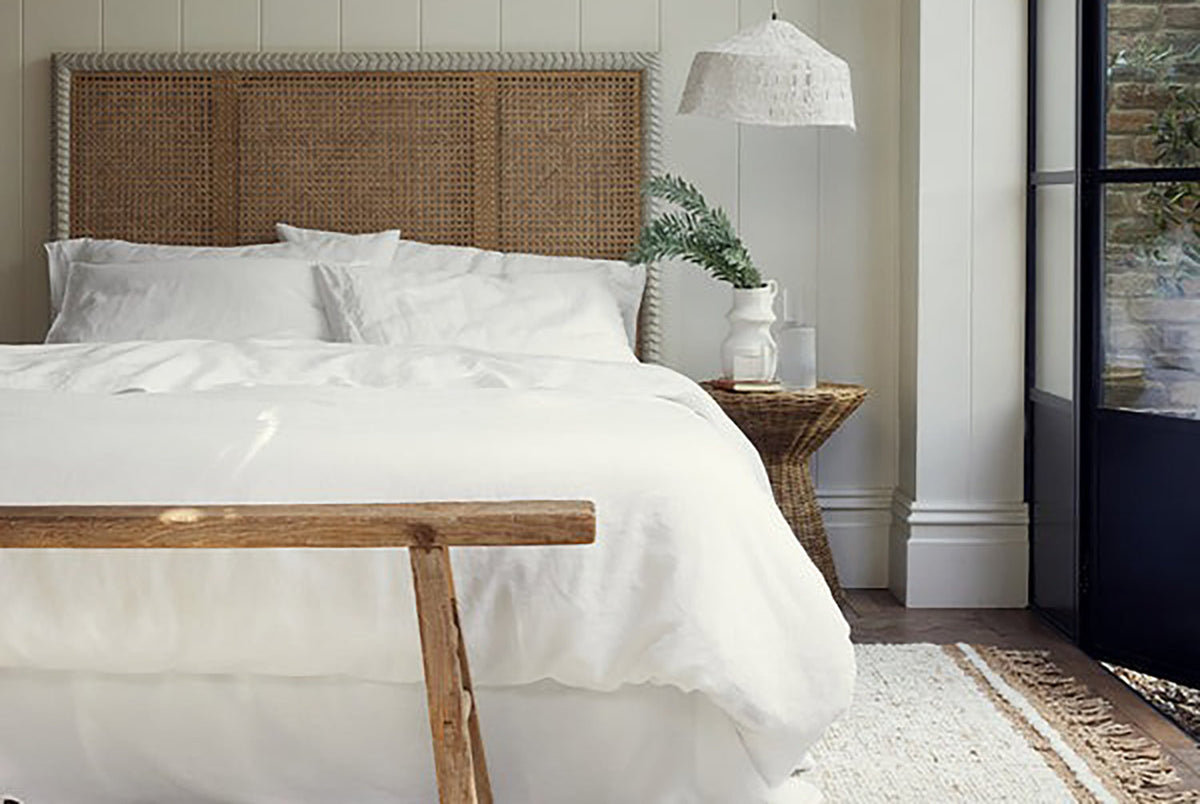
Linen vs Cotton Bedding: Key Differences & Benefits
|
Time to read 6 min
This store requires javascript to be enabled for some features to work correctly.
Written by: The Myza Editorial Team
|
Time to read 6 min
Choosing the right bedding can be a daunting task as we typically spend around one third of our lives in bed. When looking for natural, comfortable and long-lasting fabrics for bedding, linen and cotton rank highly. They share several similarities and both will help you get a good night’s sleep but there are also a few differences and being aware of these should make it easier to choose between the two. This guide takes a closer look at these differences so should prove helpful when making your choice.
Linen, one of the world’s oldest fabrics, is a natural fibre produced from the stem of the flax plant. It is stronger and more durable than cotton so linen bedding will last much longer. Linen has a rougher feel than cotton but will gradually soften with each wash, essentially improving with age, cotton on the other hand is soft from the moment it’s removed from its packaging.
Cotton is also a natural fibre that has long been a popular choice for bedding because of its versatility. The cotton plant yields fluffy clusters that once woven, make fibres that are finer than linen, and can be woven together into a higher thread count fabric, providing a variety of finishes from silky to soft, sateen to smooth to suit every taste. Percale or sateen weave tend to be the most popular. Percale is breathable, and often crisp to the touch, making it a good choice for people who overheat at night whilst sateen has a smoother finish, but can often feel a little warmer. Linen on the other hand provides fewer design choices.
Linen is highly breathable and has excellent temperature regulating qualities, keeping you warm in winter and cool in summer. It’s also moisture-resistant so ideal for those who live in warmer climates or who tend to sleep hot at night. Cotton is also breathable and temperature regulating but not to the same extent as linen. It also has weaker moisture-wicking properties.
Both cotton and linen are hypoallergenic; however, linen is slightly better for people with allergies. This is because the lower thread count and the loose weave is less likely to trap dust and particles.
Compared with cotton, the process of extracting and weaving linen is more labour-intensive, so linen is generally more expensive than cotton.
Both cotton and linen are popular bedding choices in hot weather. Both fabrics are breathable, though the breathability of cotton depends more on the weave of the fabric rather than the fibres themselves. Some cotton weaves are thicker and therefore less breathable. Flax linen fibres, on the other hand, are hollow so air can circulate more easily than cotton keeping your body cool even on the hottest night.
Although cotton is slightly more absorbent than linen—able to hold 25% of its weight in water over linen’s 20%—linen’s moisture-wicking abilities far outstrip those of cotton, due to naturally present pores in the flax fibre. This means that linen wicks perspiration away from your body, keeping you cool, making it ideal for hot weather or for hot sleepers. These same pores trap warm air in winter, forming an insulating layer that keeps you warm during the colder months.
Because linen flax fibres are longer and wrapped tighter than cotton fibres, linen is stronger and more durable than cotton, so linen bedding will last longer. When washed and cared for properly, cotton sheets will last around five years before showing any signs of wear, whilst linen has the potential to last up to a decade or two before needing to be replaced. Before you buy linen bedding we would recommend examining the weave of the linen as a very loose weave with open spaces between threads will not last as long.
Caring for linen and cotton bedding is straight forward, wash them both in cold or lukewarm water with mild detergent. Avoid high temperature as it can cause linen and cotton fibres to contract thereby shrinking. Air drying is always best but if you need to use a tumble dryer, select a low heat setting removing the bedding whilst it's still slightly damp. Part of linen's charm is its wrinkled look however if you prefer otherwise, iron it on a low heat when it's slightly damp. Cotton bedding will require a little more effort if you want to achieve a perfect wrinkle-free finish. Use a steam iron on a low setting to press the bedding.
Linen is a more environmentally friendly option than cotton. The flax plant is naturally resistant to pests and therefore can be grown without the use of harmful pesticides and herbicides. It also needs little irrigation. The whole of the flax plant can be used and at the end of its life linen is fully biodegradable. As linen fabric is extremely durable it will not need replacing for many years thereby saving on natural resources and reducing waste. Cotton on the other hand requires large amounts of irrigation and unless grown organically also needs chemicals to grow. It is not as durable as linen so cotton bedding will need replacing sooner.
Linen bedding needs to be washed less frequently than cotton bedding, every 1-2 weeks depending on personal preference and factors such as humidity. It's highly breathable and has natural moisture-wicking and antibacterial properties meaning it stays fresher for longer periods, reducing the need for frequent washing. Cotton bedding whilst breathable, absorbs moisture and can retain sweat more easily than linen. It will generally require washing weekly to maintain its freshness.
Whether you choose cotton or linen bedding will ultimately depend on your preferences and needs, as both fabrics have distinct pros and cons. Let’s delve into these.
So to sum up; Linen bedding could be the perfect option if you value durability, excellent temperature regulation and breathability, and do not mind a more textured feel to your bedding. It is especially well suited to warm climates and for hot sleepers. Cotton bedding on the other hand could be a great option if you prioritise softness and a smooth feel to your bedding. It’s a versatile option for most preferences coming in a wide variety of finishes and is generally more affordable than linen. Ultimately however, the best option depends upon your personal preferences, your budget and the aesthetics that you would like your bedroom to have. Ultimately, the best option depends upon your personal preferences, your budget and the aesthetics that you would like your bedroom to evoke.
The Myza Editorial Team
Receive 10% off your first order when you subscribe to our newsletter





